1 - Welcome to #ThreadTalk & gird your loins! We're talking skivvies, undies, unmentionables, lingerie🩲-- that's right: underwear.
Tonight we'll part the veil & to find what lies beneath. We've got witchcraft, weird myths & plenty of spice. 🔥 🔥 🔥
But first, mummies!
Tonight we'll part the veil & to find what lies beneath. We've got witchcraft, weird myths & plenty of spice. 🔥 🔥 🔥
But first, mummies!
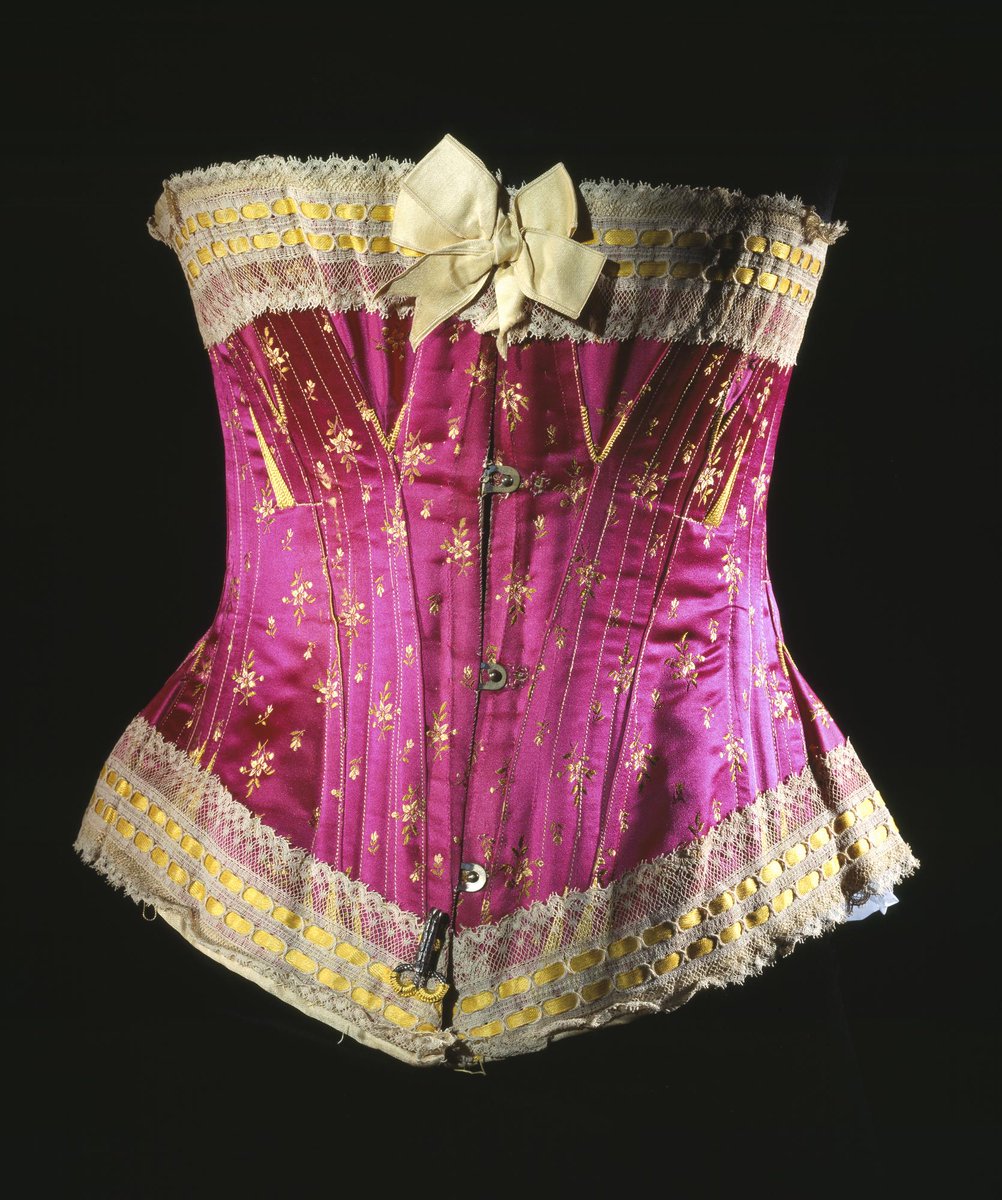
2 - Tradition says Adam & Eve used fig leaves, but the most likely first "underwear" was woven of plant materials or leather. Hence, it's hard to find extant remains.
Ötzi the Iceman, though, who's about 3500 years old, had a very well preserved one. So did the Aztecs, pictured.
Ötzi the Iceman, though, who's about 3500 years old, had a very well preserved one. So did the Aztecs, pictured.
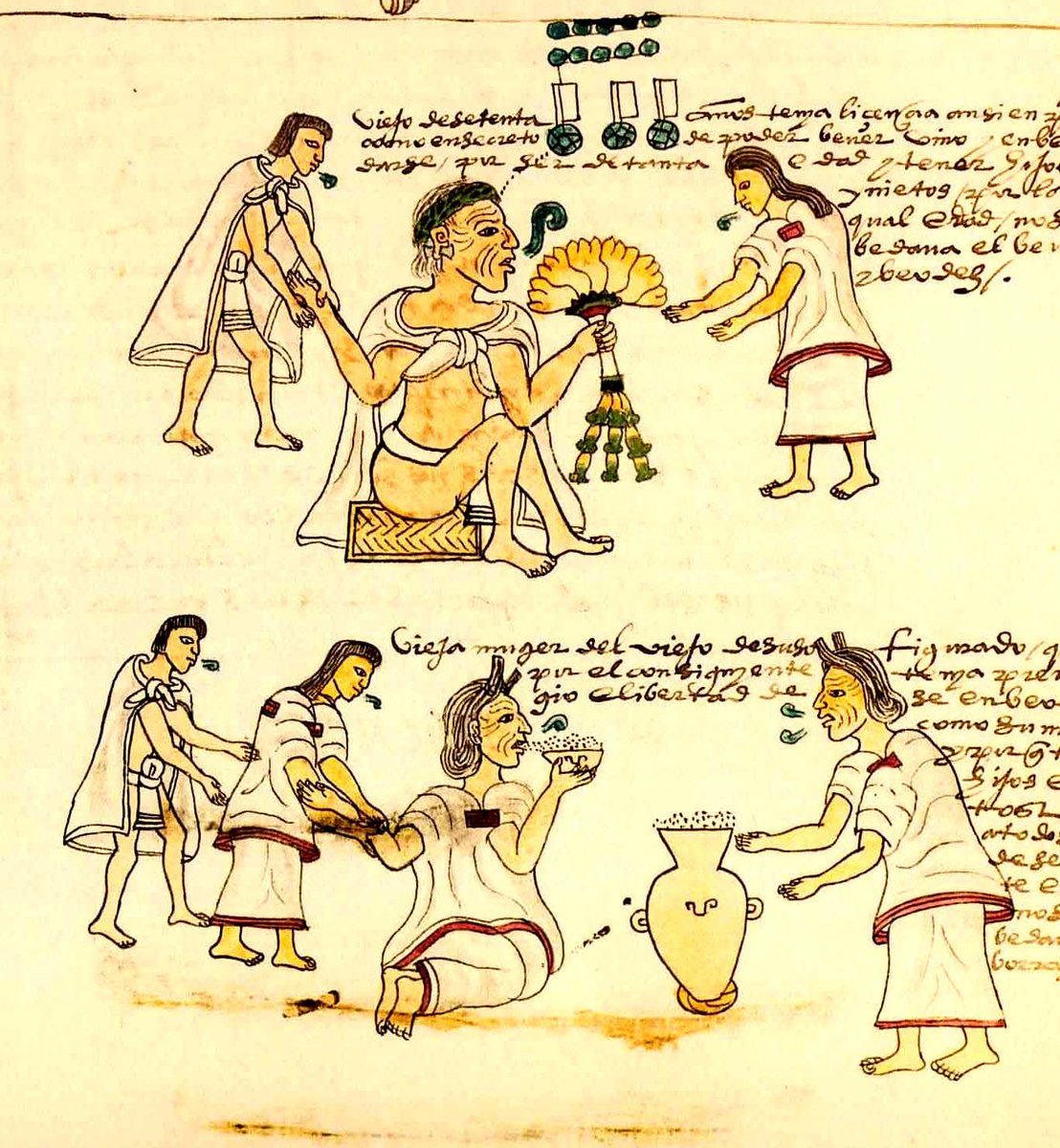
3 - Loincloths were kind of a global sensation for a while. Got a belt and some felt? Strap it together, vavoom!
Unsurprisingly, the ancient Egyptians used linen for their flappy bits. Indeed, King Tut had a staggering 145 loincloths starched and pressed for the afterlife.
Unsurprisingly, the ancient Egyptians used linen for their flappy bits. Indeed, King Tut had a staggering 145 loincloths starched and pressed for the afterlife.
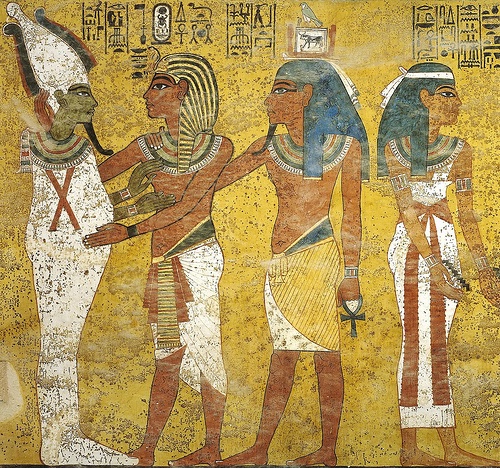
4 - Another kind of underwear (which also doubles as outerwear) art historians cleverly call a "cache-sexe" (or "modesty skirt") in tribal communities all around the world. This one dates from the 12th century & is from the now vanished Tellem People of West Africa. 
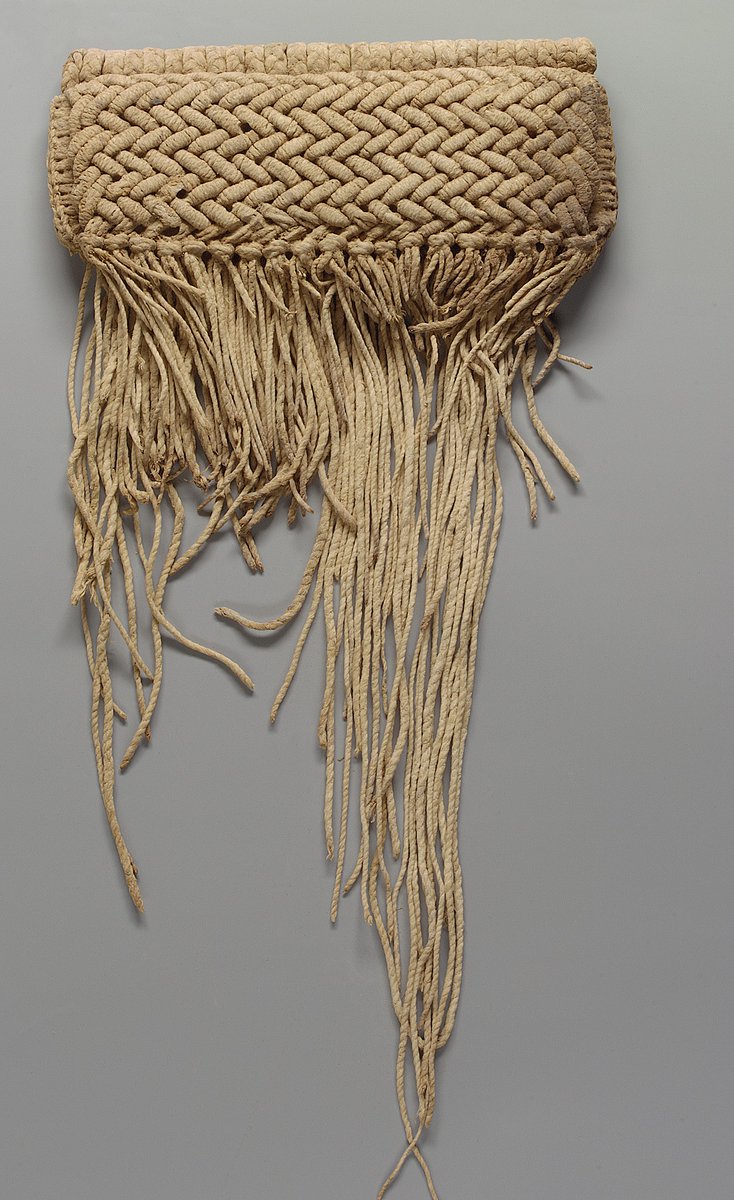
5 - The Romans, bless their hearts, introduced two-piece underthings.
This mosaic shows female athletes in such garments. I'm pretty sure would still cause a stir on Bella Hadid's IG. The bottom was called a subligaculum and the top strophium.
This mosaic shows female athletes in such garments. I'm pretty sure would still cause a stir on Bella Hadid's IG. The bottom was called a subligaculum and the top strophium.
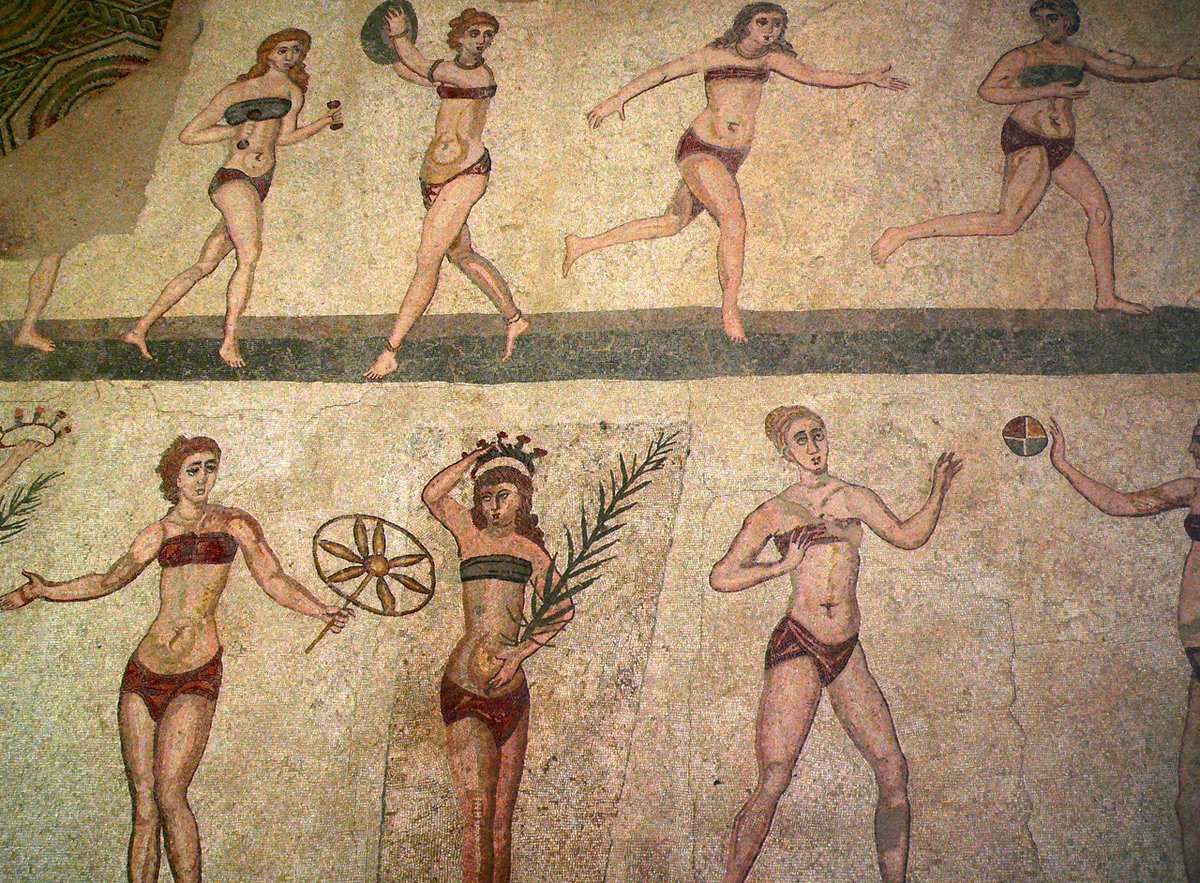
6 - Consequently, however, the Romans were not prepared for cold weather. Soldiers wrote home from Britain begging for socks... to wear with their sandals. 😳
These date from 300-499 AD & were found in Egypt, but Romans likely wore similar.
Apologies to Big Bird...
These date from 300-499 AD & were found in Egypt, but Romans likely wore similar.
Apologies to Big Bird...
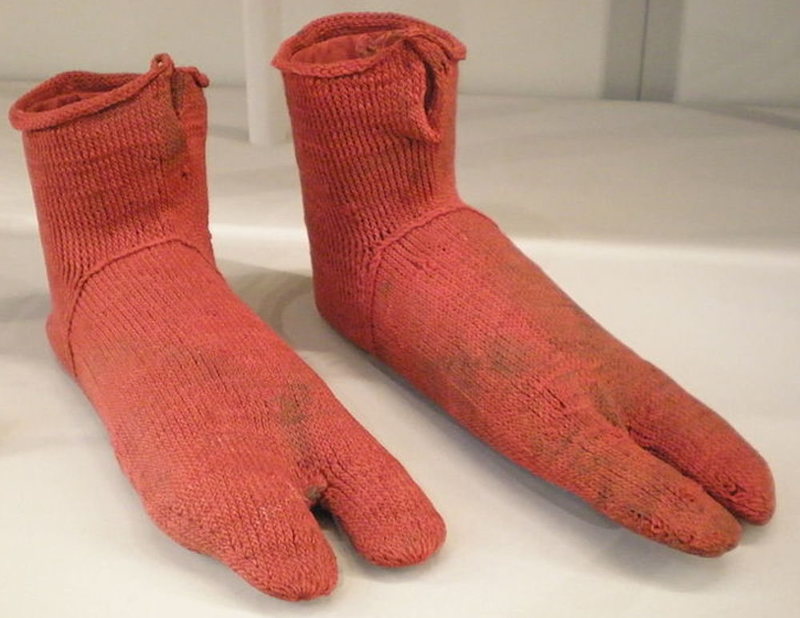
7 - In China, women wore a variety of undergarments including the dudou, a triangular halter-like top, which popular during the Ming Dynasty (1368-1644).
Judging by the very spicy paintings I found (this one was strategically cropped) it was quite scandalous. Ahem.
Judging by the very spicy paintings I found (this one was strategically cropped) it was quite scandalous. Ahem.
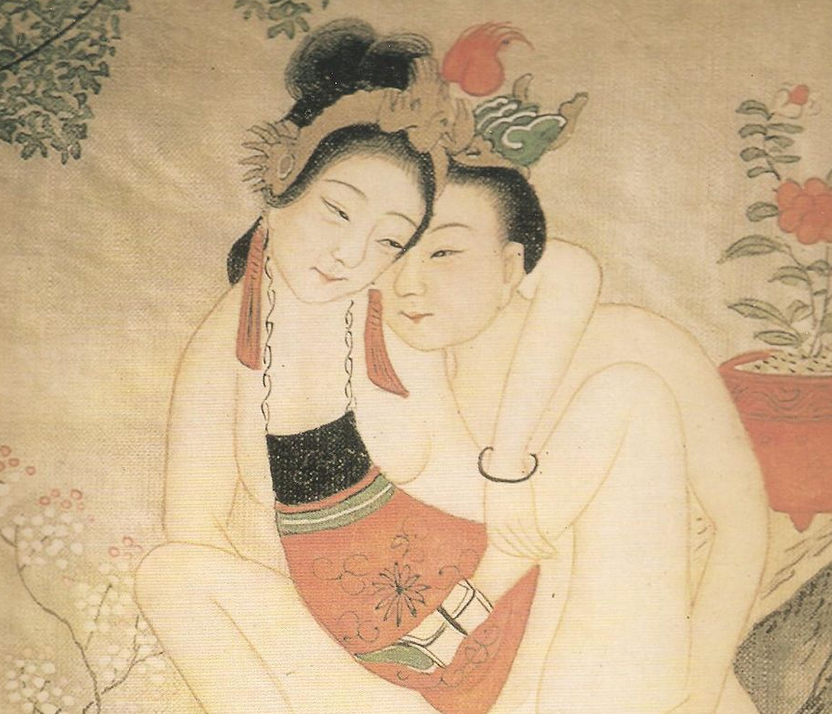
8 - In the Indian subcontinent, warmer climates meant free-flowing clothes. There was also less sexualization of female bodies.
Well, not until Western colonists started imposing their standards. Because of course.
Here Saravati wears the Kashmiri kurta-mode style of dress.
Well, not until Western colonists started imposing their standards. Because of course.
Here Saravati wears the Kashmiri kurta-mode style of dress.
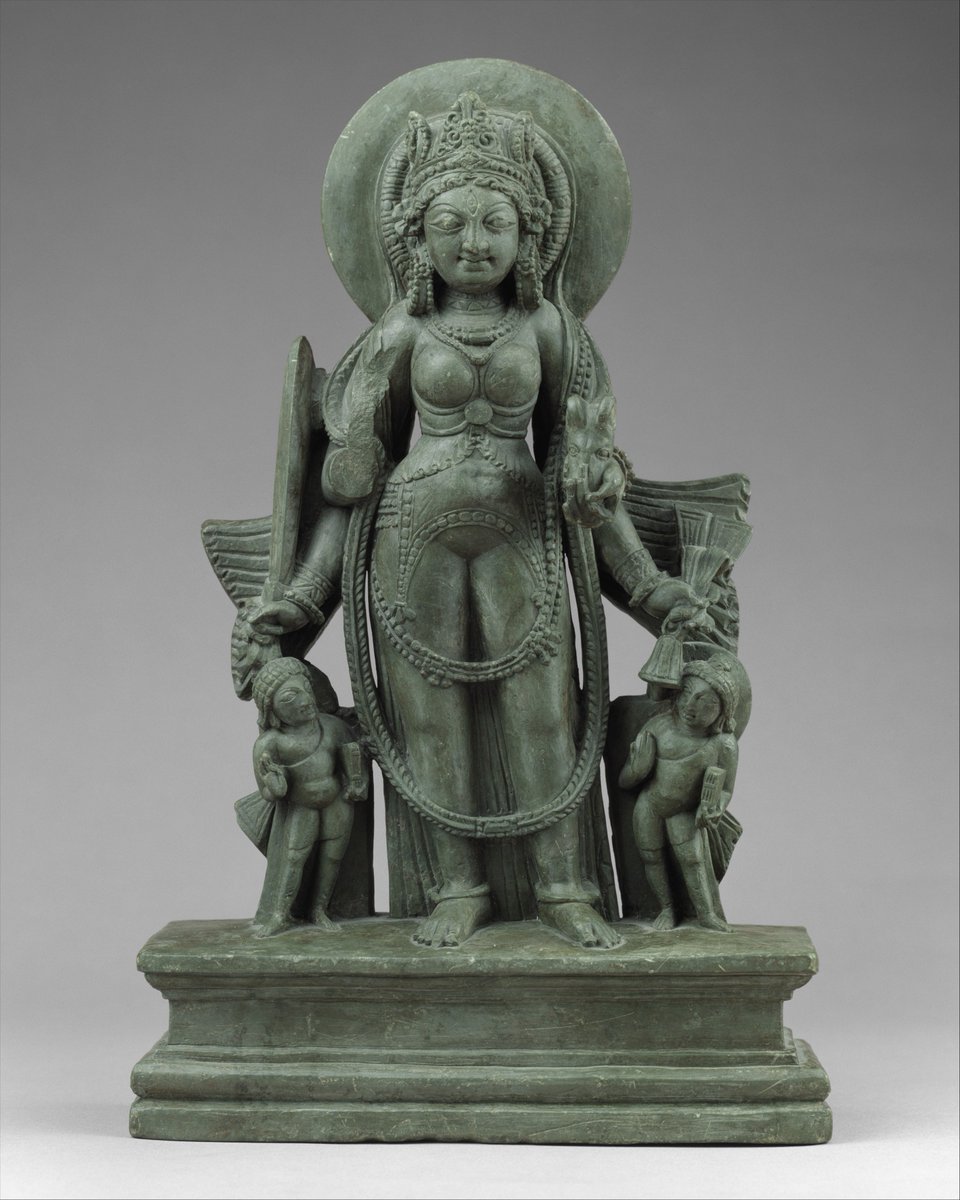
9 - Which brings us to the Middle Ages in Europe.
1st thing's first. There were all manner of weird undergarments in the Middle Ages, but chastity belts weren't one of them.
Nope, they're a fabrication. We thought this one was from the 15th c--it's from the 19th. SMH.
1st thing's first. There were all manner of weird undergarments in the Middle Ages, but chastity belts weren't one of them.
Nope, they're a fabrication. We thought this one was from the 15th c--it's from the 19th. SMH.
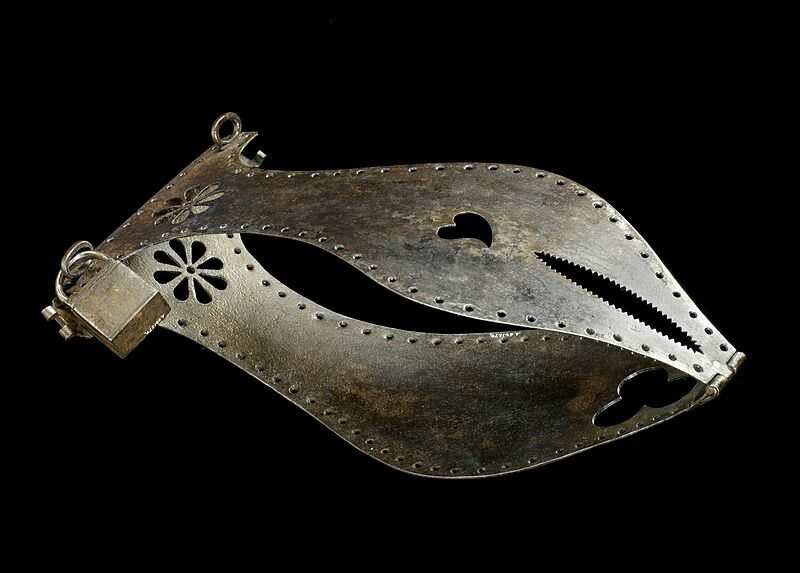
10 - Which is not to say men weren't REALLY CONCERNED with what happened between a woman's legs. More on that later.
A cilice, or hair shirt, was self-injuring clothing worn by medieval Christians. St. John the Baptist (by Leonardo here) purportedly wore one, as did Charlemagne.
A cilice, or hair shirt, was self-injuring clothing worn by medieval Christians. St. John the Baptist (by Leonardo here) purportedly wore one, as did Charlemagne.
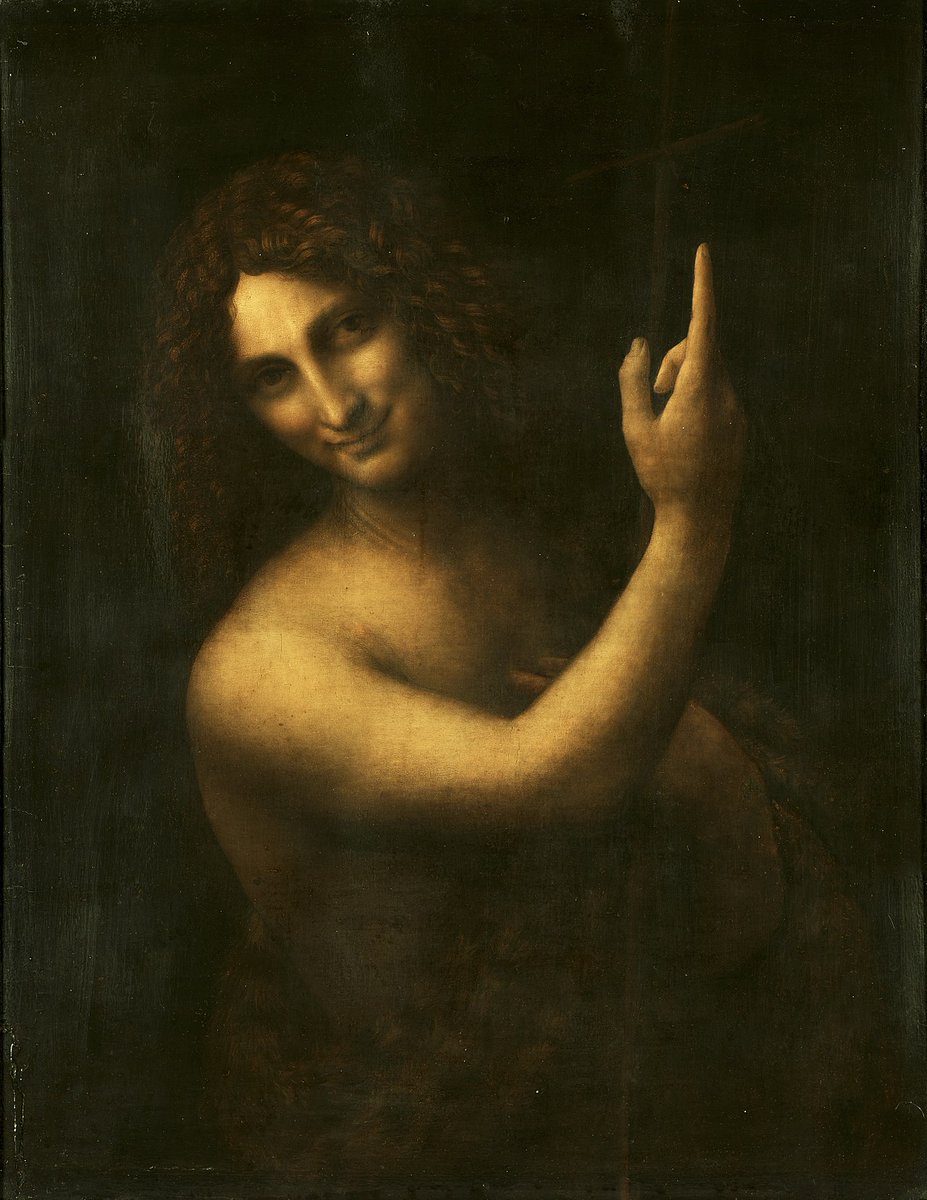
11 - In medieval Europe it was all about the layers for both men and women.
Men wore types of trousers called braes, which came in a variety of lengths & styles depending on need. This is from the rom the Maciejowski Bible (13thC), and gives some idea to construction.
Men wore types of trousers called braes, which came in a variety of lengths & styles depending on need. This is from the rom the Maciejowski Bible (13thC), and gives some idea to construction.
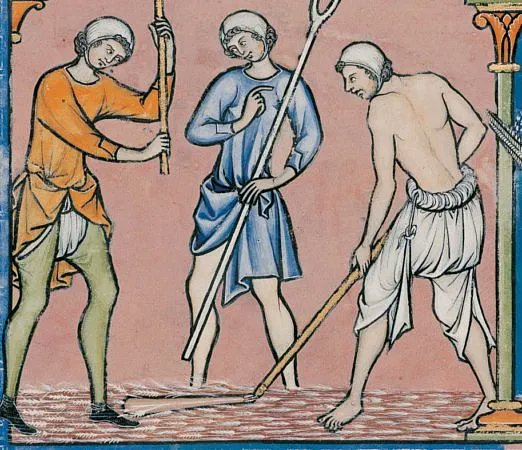
12 - For women, it was about the chemise, and the surcoat, and the layers upon layers. But by the 14th century, tight-fitting tops changed the silhouette, making way for the cone shape of the Renaissance & our friend, stays.
See below. Feat: strategically placed ewer.
See below. Feat: strategically placed ewer.
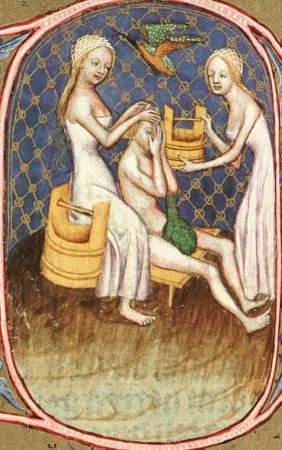
13 - Stays, the precursor to the modern corset, used to be called "two bodies" & were fully boned bodices. They could be structured with reeds or whalebone.
This is where things get sticky, though, from a terminology standpoint. This example is from 1660.
This is where things get sticky, though, from a terminology standpoint. This example is from 1660.
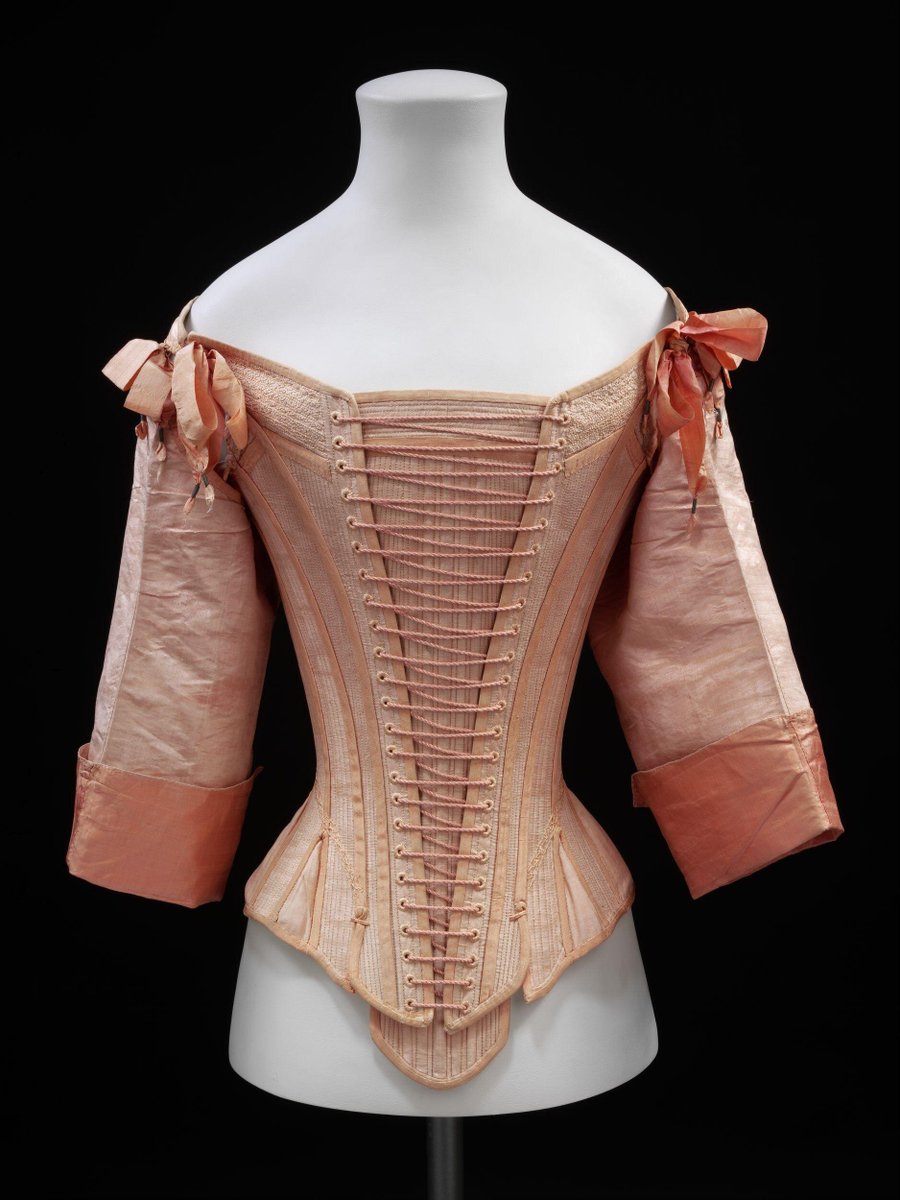
14 - Depending on location and time, stays could be what we think of now as corsets--or jumps, which were quilted and padded undergarments that were much more comfortable, like this one below, which had matching POCKETS. 🌈🌈🌈
Because pockets, too, were a kind of undergarment.
Because pockets, too, were a kind of undergarment.

15 - YES POCKETS. You can see here, how the pockets worked, under the petticoat. These pockets matched the waistcoat/jumps from above, so I just had to show them.
Because YELLOW POCKETS.

Because YELLOW POCKETS.
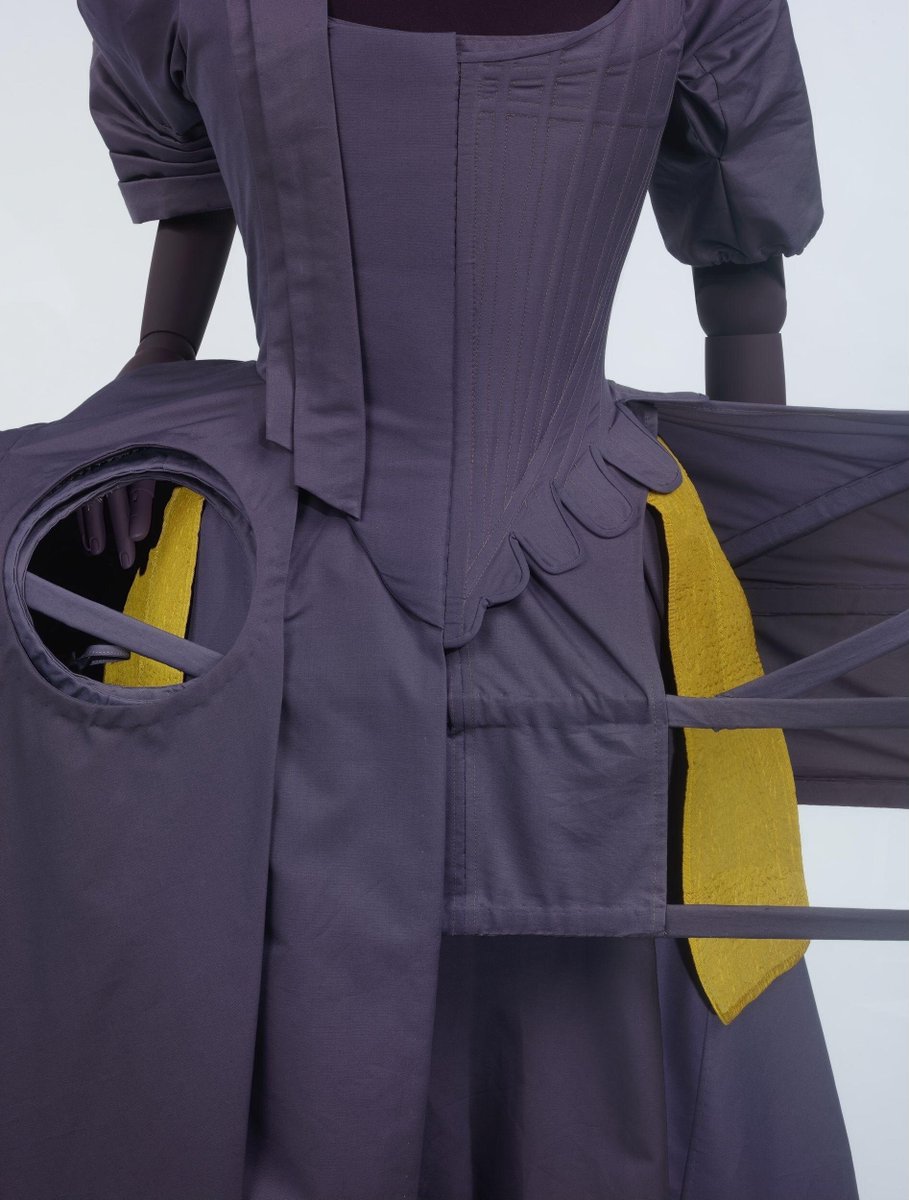
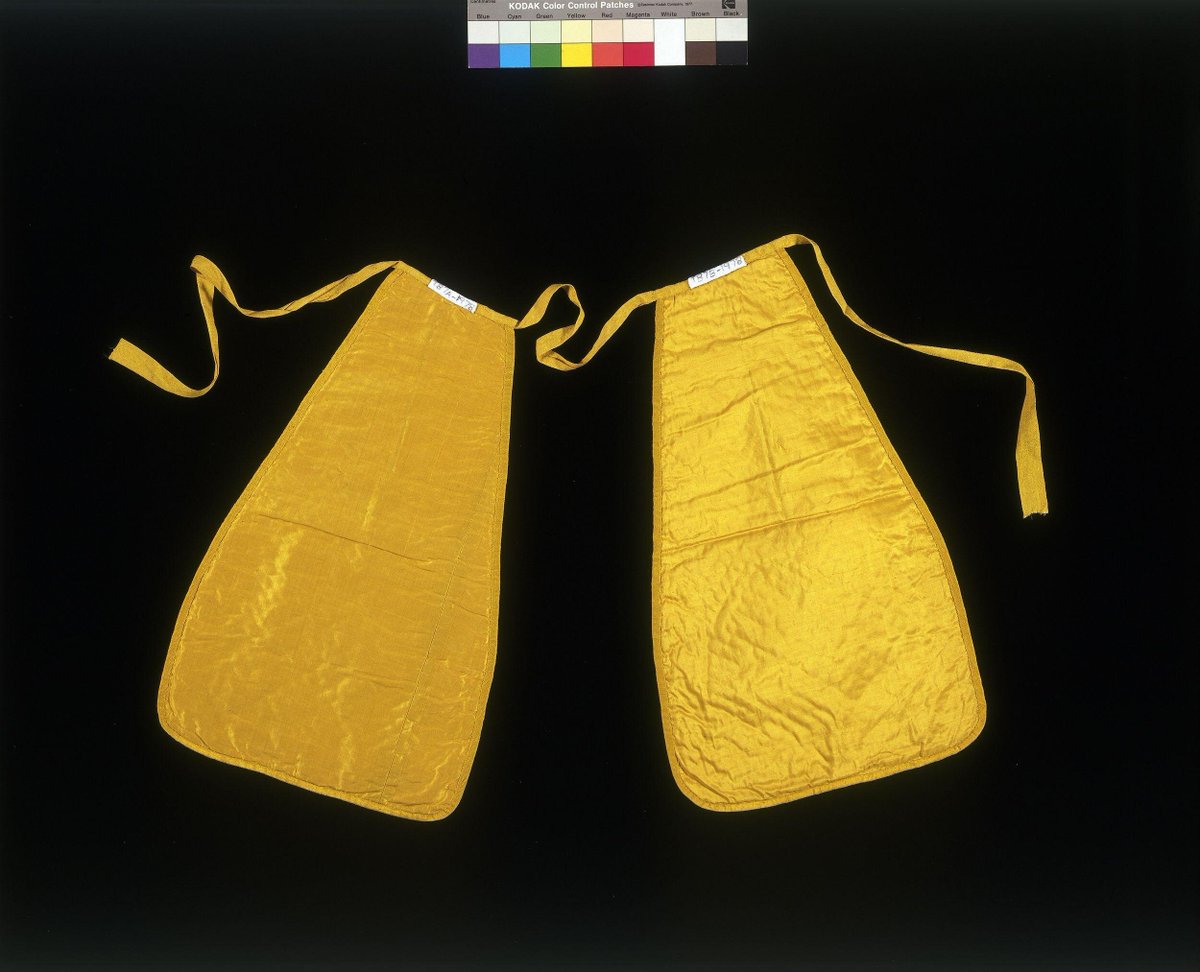
16 - Busks were essential in stay/corset-making, because they helped give rigidity -- but they were also a perfect sexy gift to slip right between the folds, ahem.
Lovers often gave engraved busks to their sweethearts. This ivory busk dates from the 16th/17th century.
Lovers often gave engraved busks to their sweethearts. This ivory busk dates from the 16th/17th century.

17 - If there's ONE THING that #Bridgerton got SO WRONG it was the corsetry. I powered through.
FIRSTLY. Women in the late Georgian & Regency wore stays, & they were not cinching nightmares. The whole point was to look like they weren't wearing anything beneath! Below: ca 1800.
FIRSTLY. Women in the late Georgian & Regency wore stays, & they were not cinching nightmares. The whole point was to look like they weren't wearing anything beneath! Below: ca 1800.
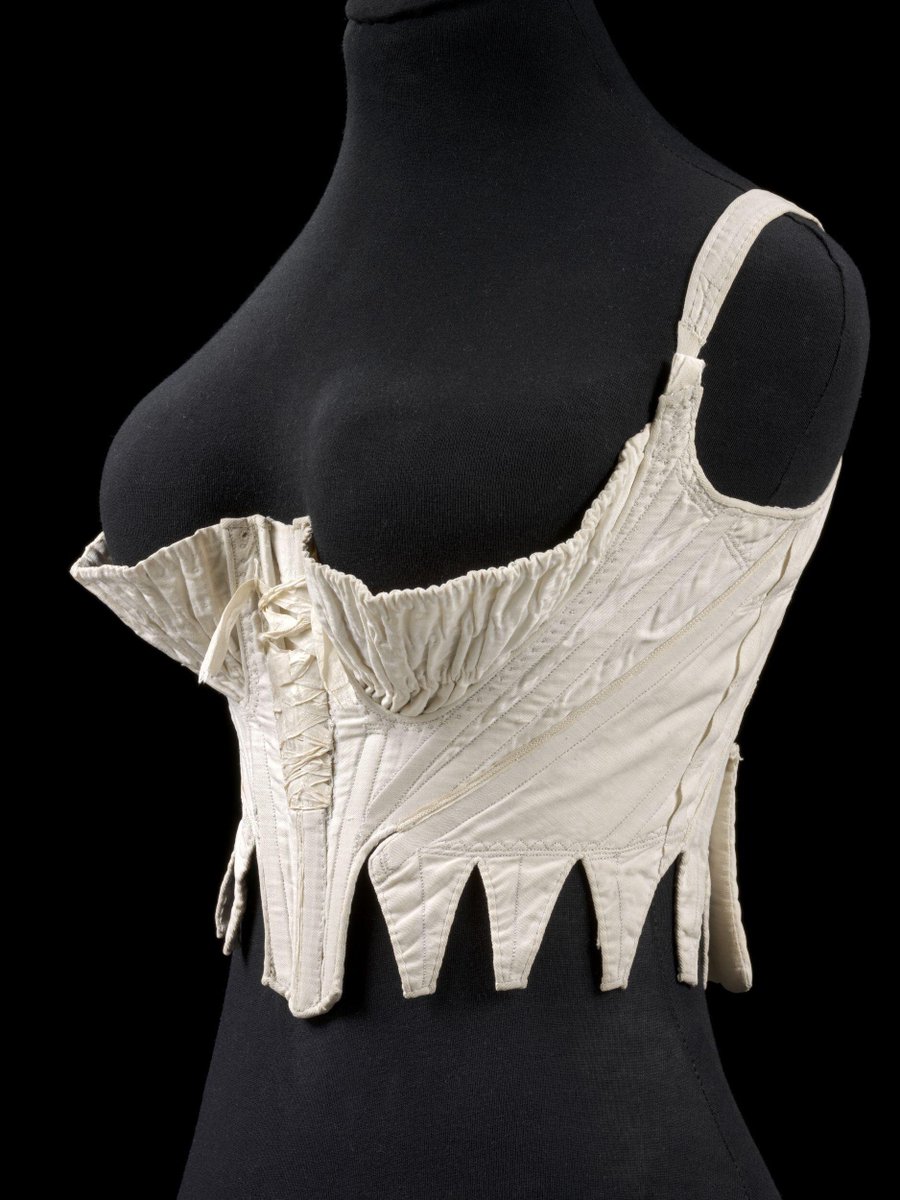
18 - The whole "tight corset" trope is just lazy. There were plenty of other horrific beauty standards to concern oneself with. Stays relied on quilting & boning, not tight-lacing.
Even a steel-boned corset, if fitted well, shouldn't have caused bruising & skin chaffing.
Even a steel-boned corset, if fitted well, shouldn't have caused bruising & skin chaffing.
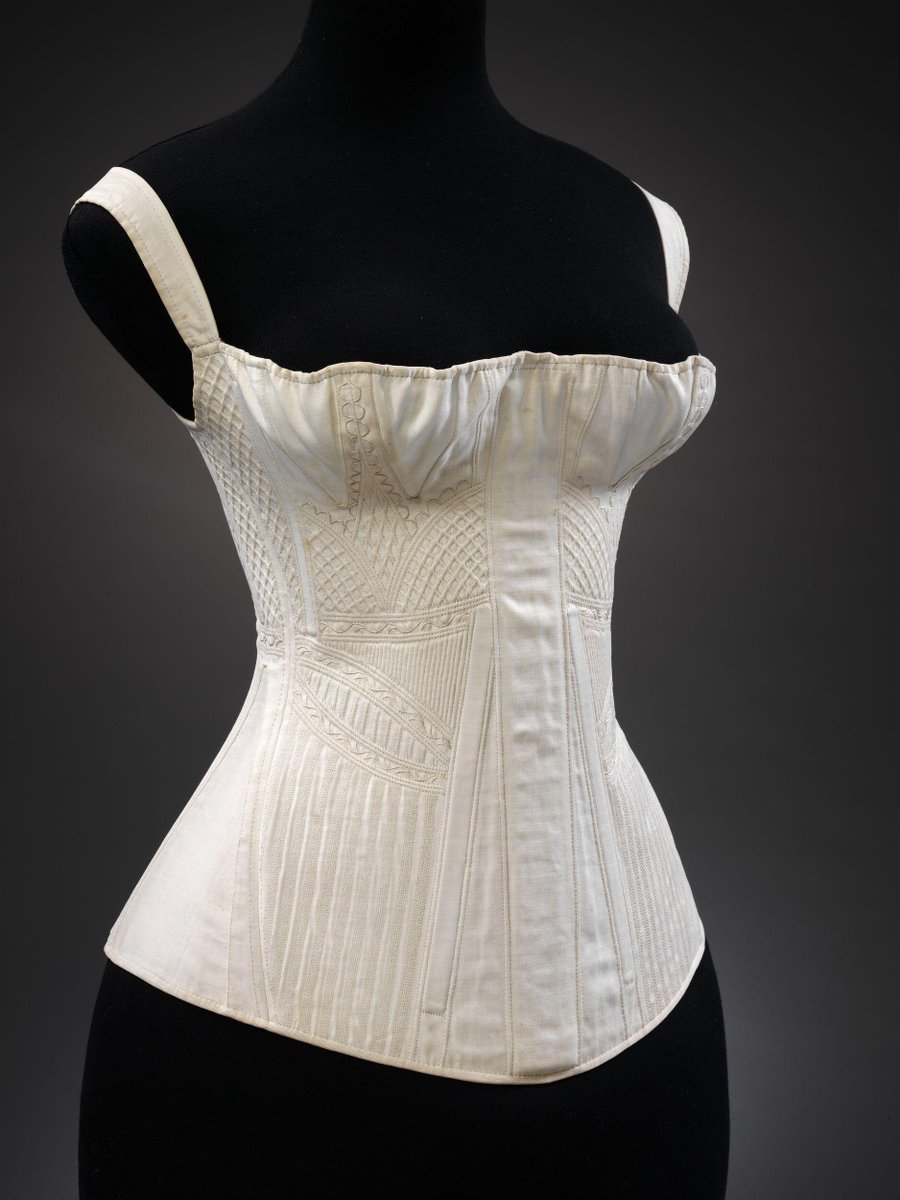
19 - Which brings me to my next topic. We've covered tops, but what about bottoms?
WELL. Most of the time women just... didn't wear anything "down there." During menstruation, even. Though they did sometimes use rags. It wasn't until dresses got BIG that the privy was a problem.

WELL. Most of the time women just... didn't wear anything "down there." During menstruation, even. Though they did sometimes use rags. It wasn't until dresses got BIG that the privy was a problem.

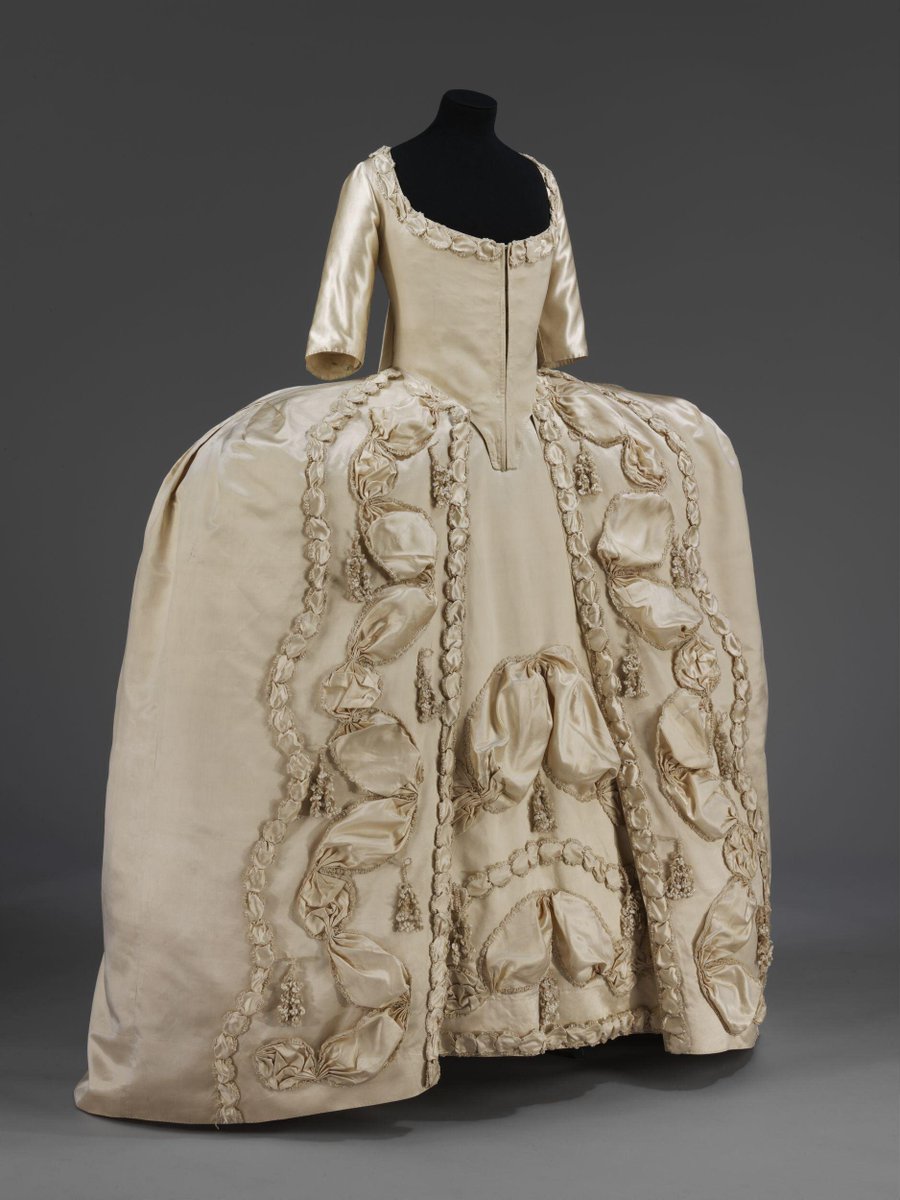
20 - So how did... women... you know... go?
Well, one way was the bourdalou. These extant "gravy boats" confused (male) historians for quite some time.
It was a portable chamber pot of sorts, designed to allow a lady to relieve herself without soiling her petticoats. Ahem.

Well, one way was the bourdalou. These extant "gravy boats" confused (male) historians for quite some time.
It was a portable chamber pot of sorts, designed to allow a lady to relieve herself without soiling her petticoats. Ahem.
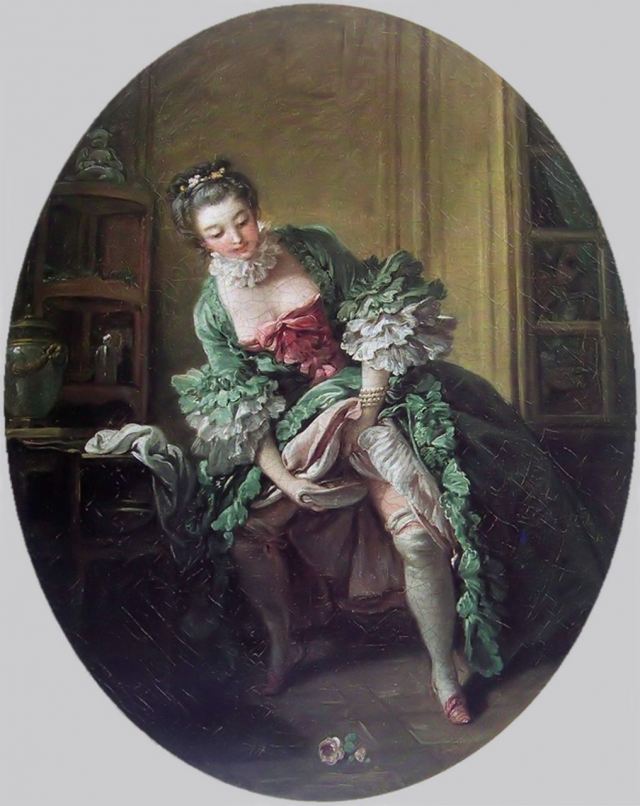
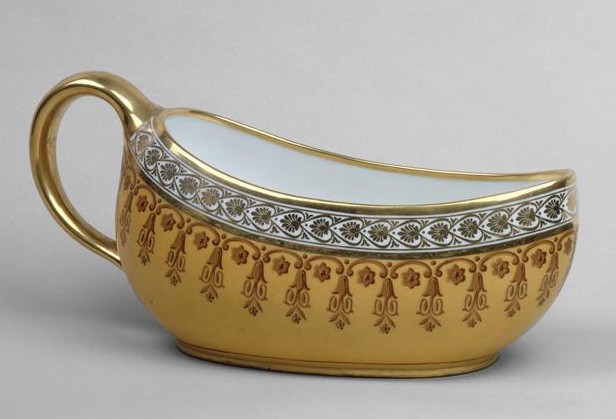
21 - Why do we know so little about this stuff? Well, bleeding women were *clearly* witches. No, seriously. Pliny thought so, and then, centuries of Western men agreed.
Eventually, women got "open drawers" because men believed it was improper not to have good ventilation.

Eventually, women got "open drawers" because men believed it was improper not to have good ventilation.
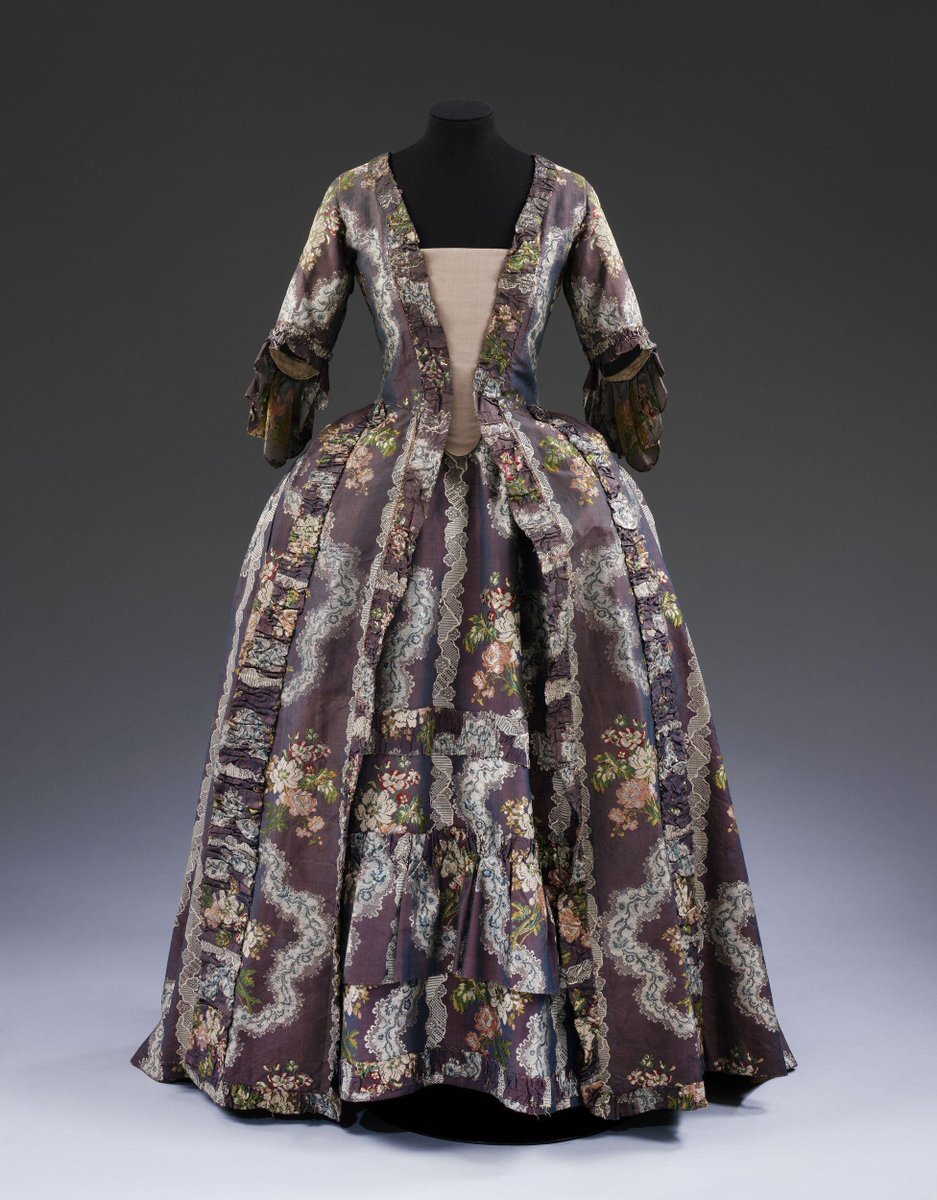
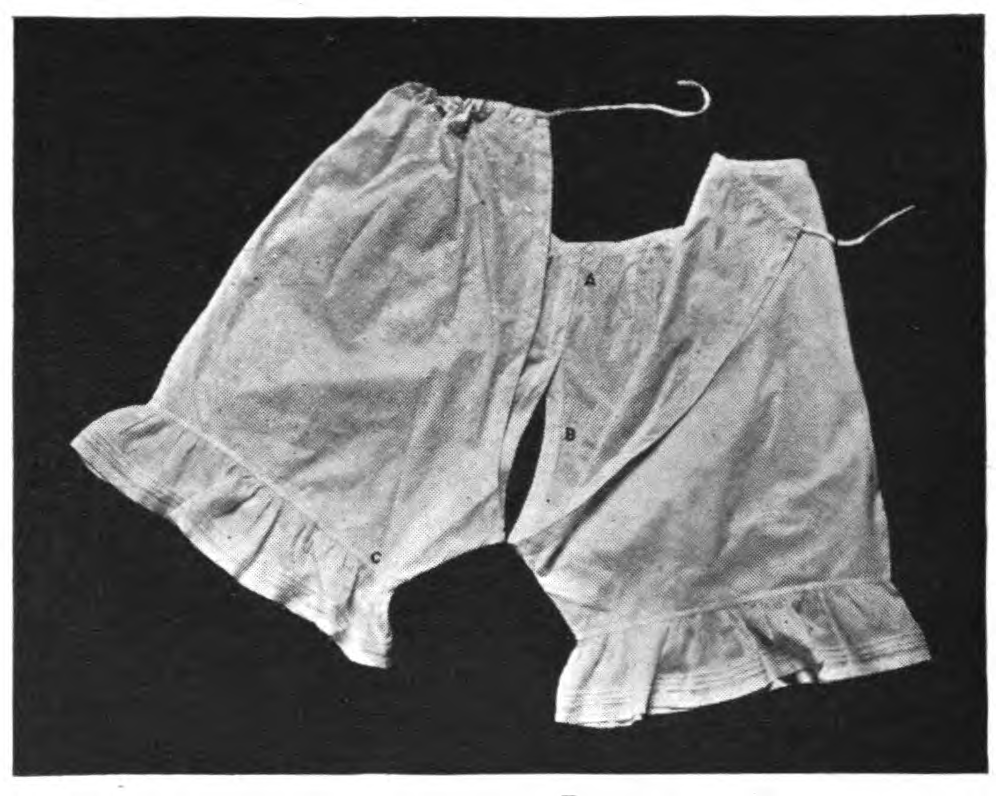
22 - Anyway, eventually bustles happened because dresses got SO BIG. The panniers, hoops, & crinolines were not only FLAMMABLE (we've covered this) but going to the bathroom was an ORDEAL.
Bustles are super cool from a structural perspective. This one was called THE PHANTOM.
Bustles are super cool from a structural perspective. This one was called THE PHANTOM.
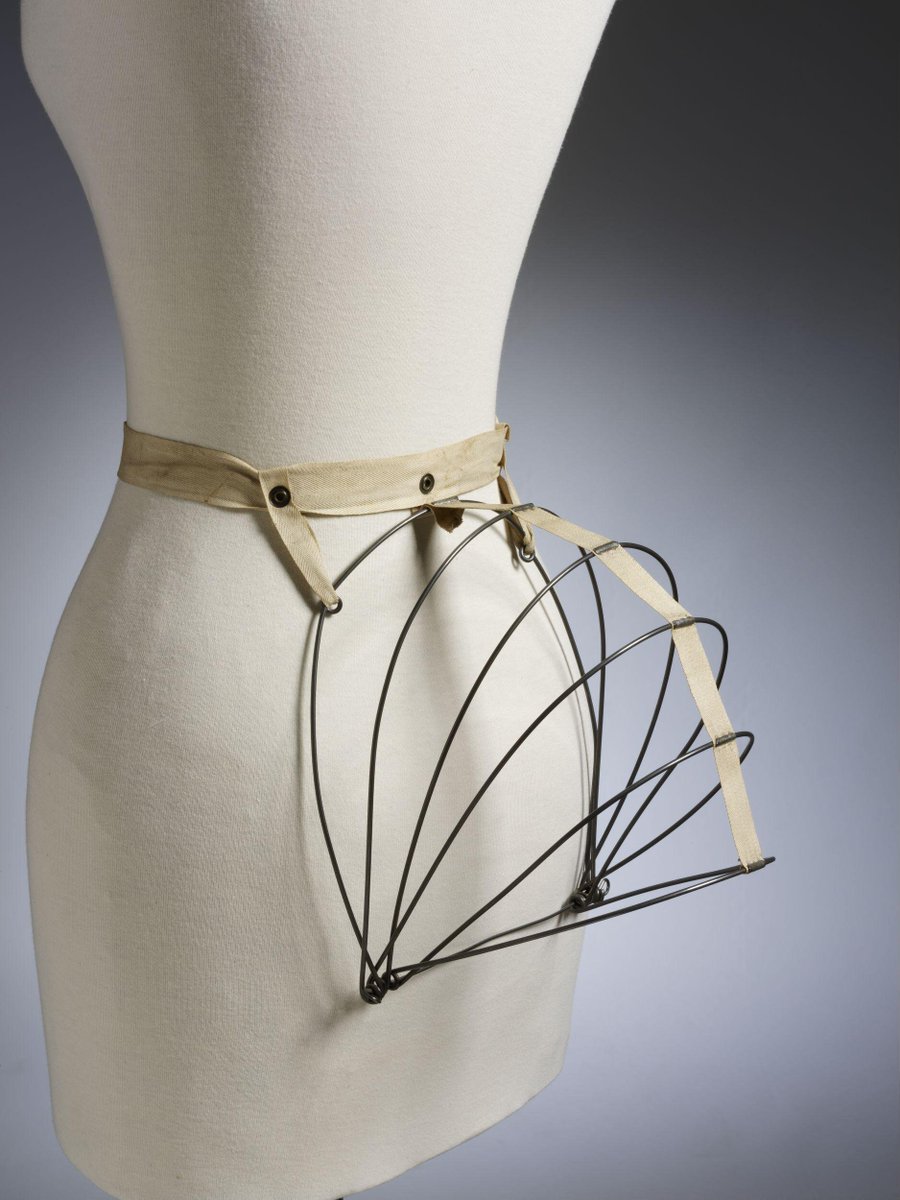
23 - Steel boning meant that yes, sometimes corsets were awful. But, as someone who has worn a good fitting corset numerous times, it's not a torture device if worn correctly.
I am obsessed with this ribbon corset because it looks like a ribcage & I'm getting Harrowhark vibes.
I am obsessed with this ribbon corset because it looks like a ribcage & I'm getting Harrowhark vibes.
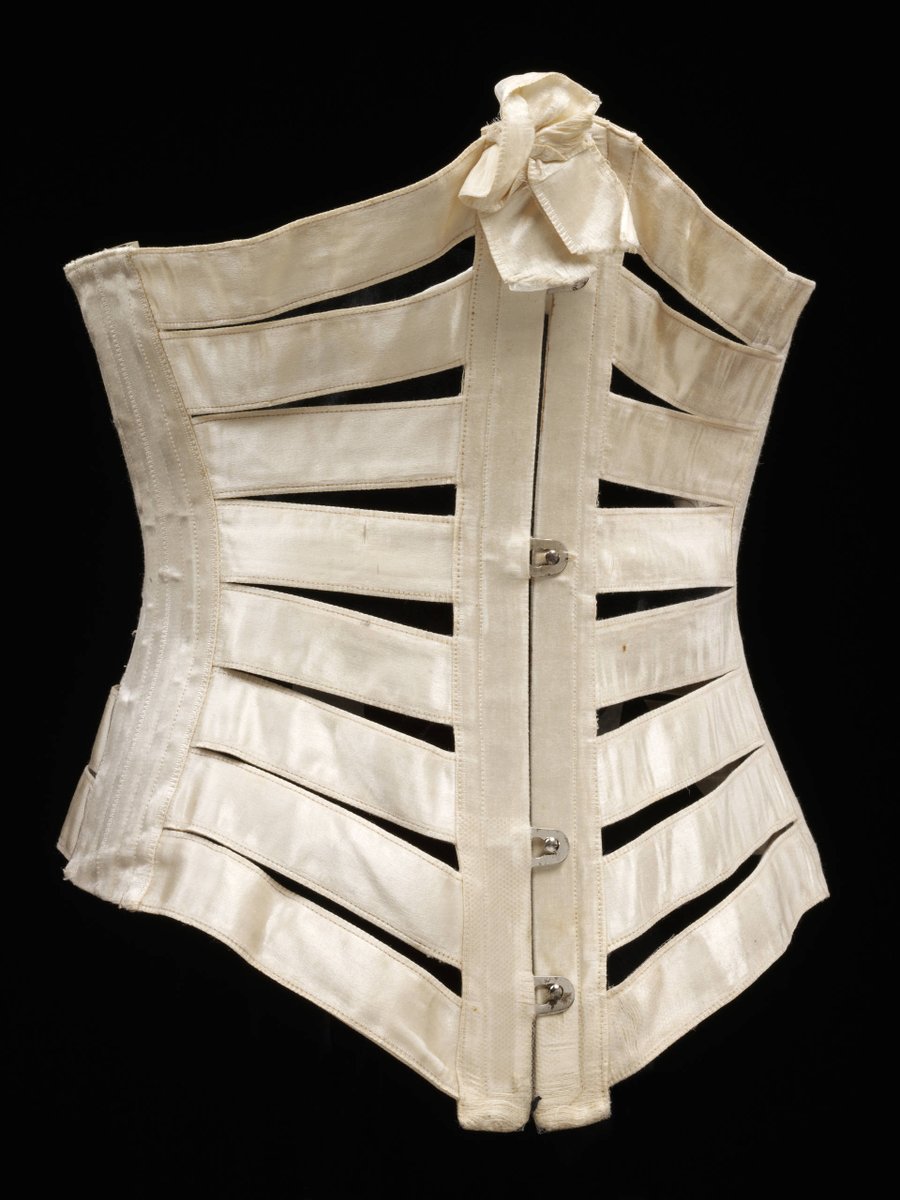
24 - This corset makes me *feel things.* Right around 1895 or so, so it's probably chemical dyed. The hook on the front is for the petticoat hitching -- you see similar bits and bobs for affixing the many layers found in gowns of the 19th century. 
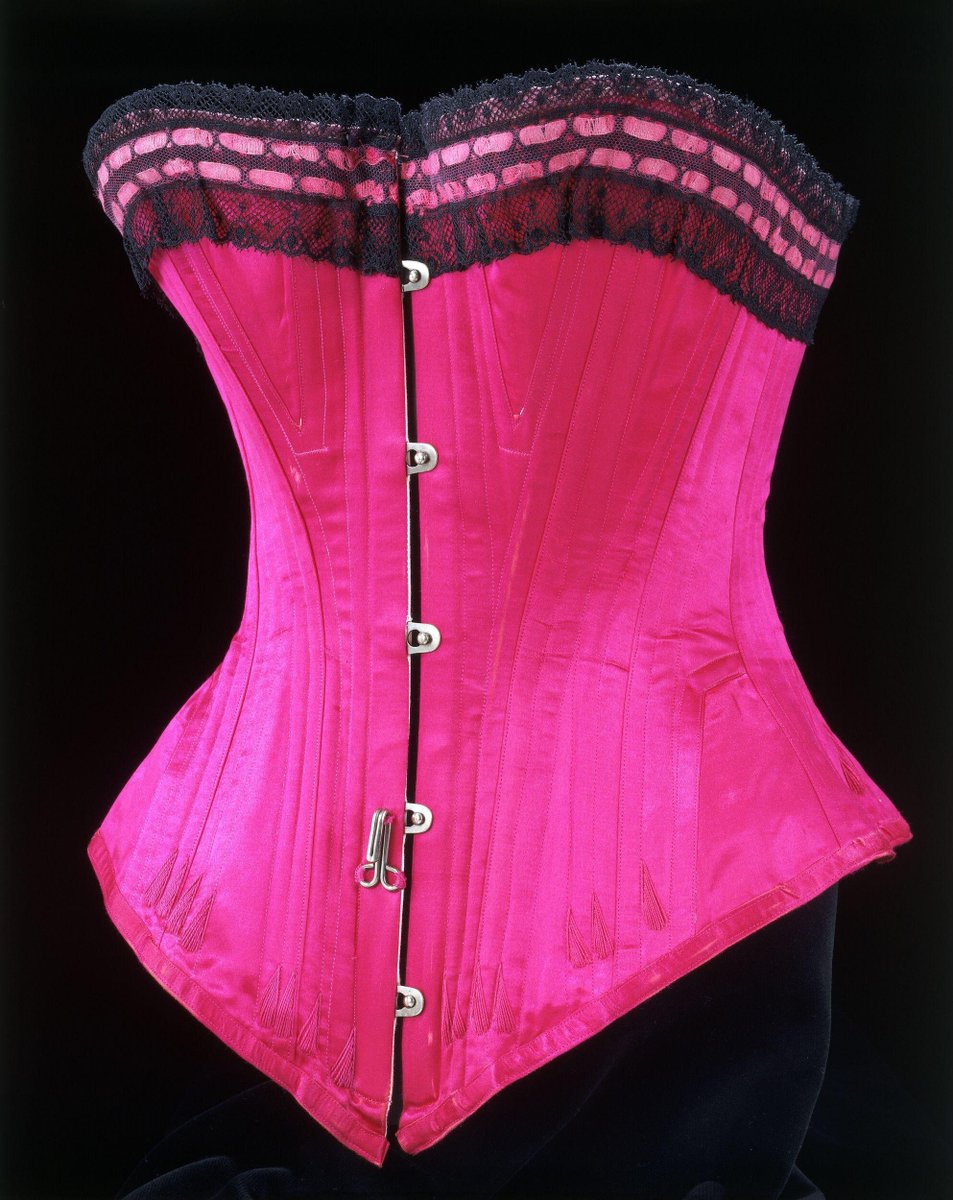
25 - To get an idea of what I mean, here's a delightful little video of a woman dressing in an 1898 Worth ballgown.
26 - Which is not to say there weren't ACTUAL torture traps. Iron corsets were a thing, for men and women, but some were for orthopedic use.
This one dates from the 18th century. Ouch. But somehow also yum?
This one dates from the 18th century. Ouch. But somehow also yum?

27 - Now for a few gowns with STRUCTURE. This 1872 piece still echoes the big crinolines, but you can see the bustle shifting up and back for easier movement around, you know, one's own life?
Could definitely be poison green.
Could definitely be poison green.
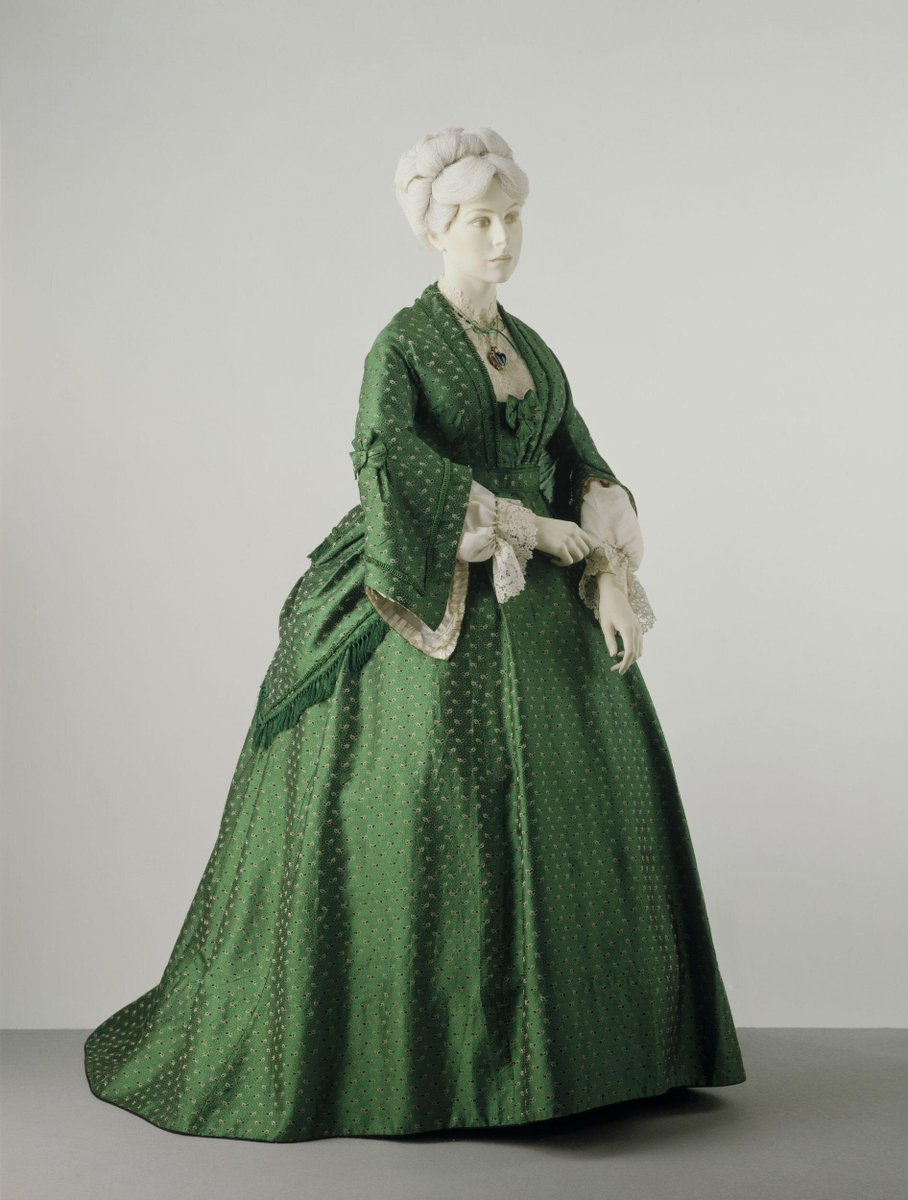
28 - This dolman from Pingat clearly is making way for the bustle! Bye bye shawls, hello dolmans. It's got arctic fox fur and chenille, and uses voided velvet. SWOON. Very White Witch. 
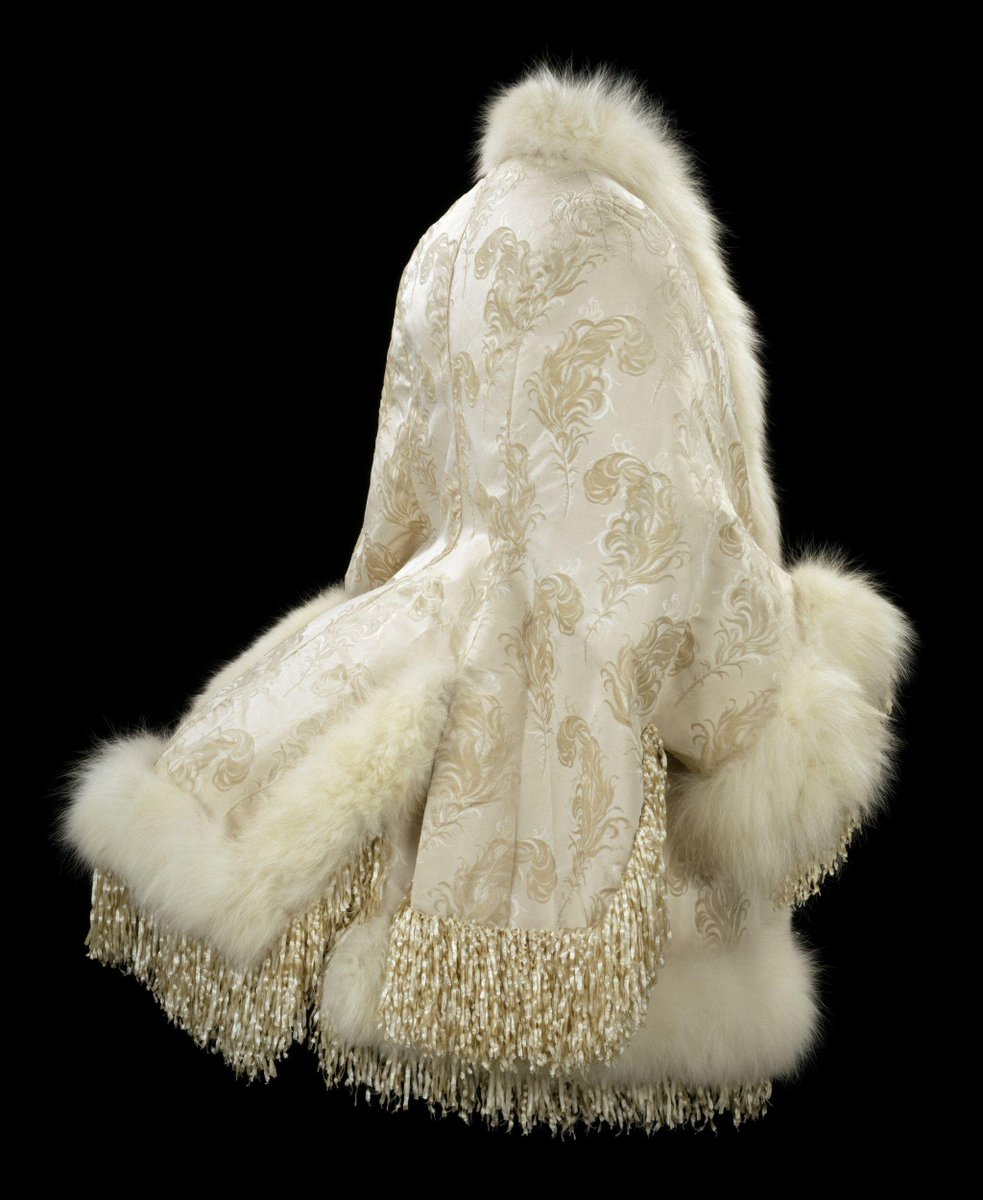
29 - And this sinner--er, dinner--dress. That is a downright dump truck of a bustle. This dates from 1884/86, and I just wanna touch those pleats please. 
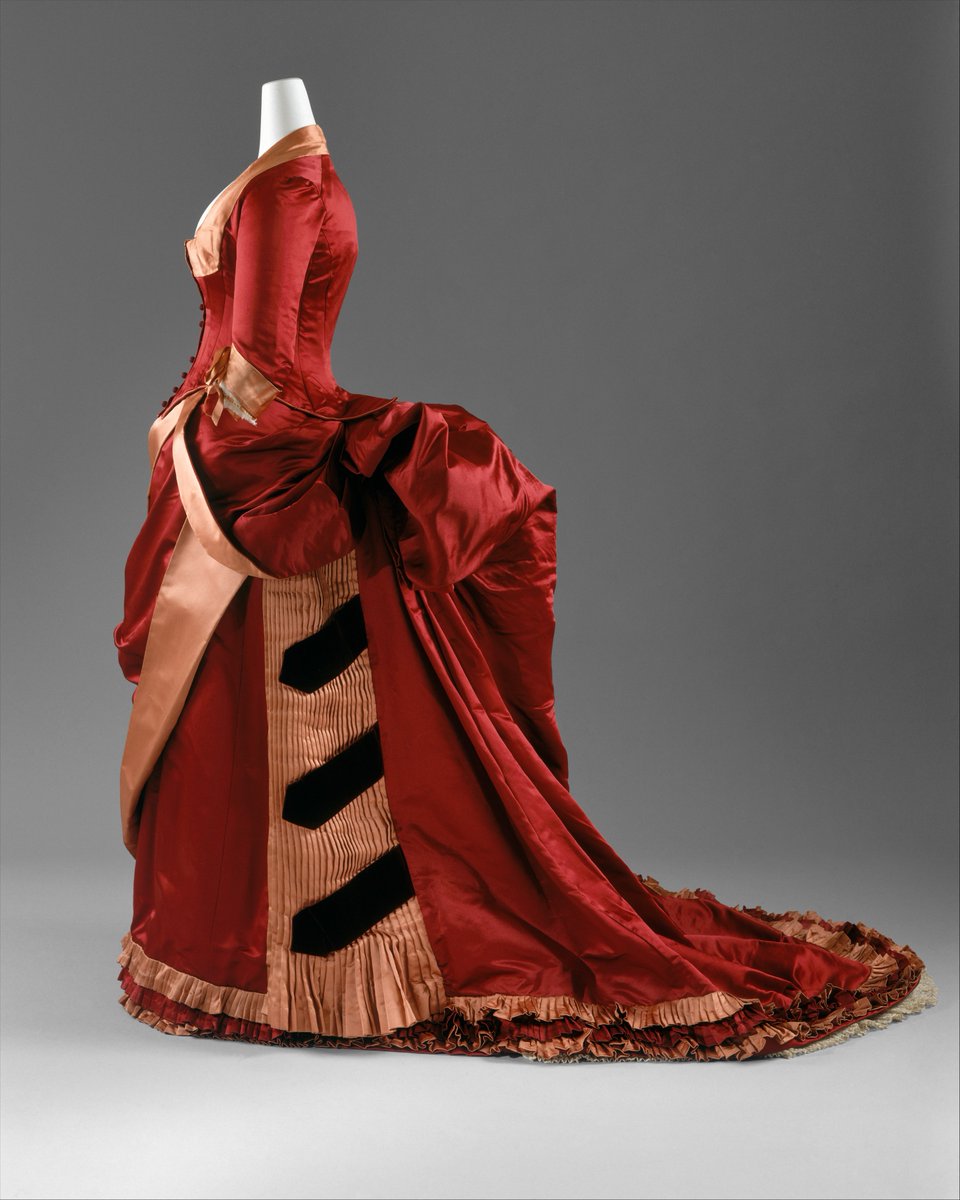
30 - LOTS of good reading this week. This is a big subject, and I had to cut for length (hah). But if you're curious, begin:
historyextra.com/period/ancient…
everymantheatre.org/history-women%…
bust.com/style/195864-w…
fashion-era.com/drawers-pants-…
kadevos.com/blogs/ask-dr-d…
digpodcast.org/2018/06/24/und…
historyextra.com/period/ancient…
everymantheatre.org/history-women%…
bust.com/style/195864-w…
fashion-era.com/drawers-pants-…
kadevos.com/blogs/ask-dr-d…
digpodcast.org/2018/06/24/und…
31 - Sources, part two:
newhanfu.com/3089.html
theswaddle.com/india-bra-hist…
lisanzauomo.com/en/2019/05/04/…
ancient-origins.net/history-ancien…
archaeologynewsnetwork.blogspot.com/2018/12/ancien…
allthatsinteresting.com/menstruation-h…
newhanfu.com/3089.html
theswaddle.com/india-bra-hist…
lisanzauomo.com/en/2019/05/04/…
ancient-origins.net/history-ancien…
archaeologynewsnetwork.blogspot.com/2018/12/ancien…
allthatsinteresting.com/menstruation-h…
32 - Sources... part three! medicaldaily.com/menstrual-peri…
collectorsweekly.com/articles/every…
janeaustensworld.com/2012/07/16/reg…
smithsonianmag.com/smart-news/med…
famsf.org/blog/corsets-c…
bustle.com/p/the-history-…
vogue.co.uk/article/histor…
collectorsweekly.com/articles/every…
janeaustensworld.com/2012/07/16/reg…
smithsonianmag.com/smart-news/med…
famsf.org/blog/corsets-c…
bustle.com/p/the-history-…
vogue.co.uk/article/histor…
33 - And FOUR sources. nationalgeographic.com/culture/articl…
researchgate.net/publication/33…
atlasobscura.com/articles/every…
medievalists.net/2018/06/underw…
researchgate.net/publication/33…
atlasobscura.com/articles/every…
medievalists.net/2018/06/underw…
34 - Thanks for hanging out with me tonight! It's always a pleasure. That concludes this week's #ThreadTalk!
Of note: did the Guggenheim steal its look from this bustle?
Of note: did the Guggenheim steal its look from this bustle?
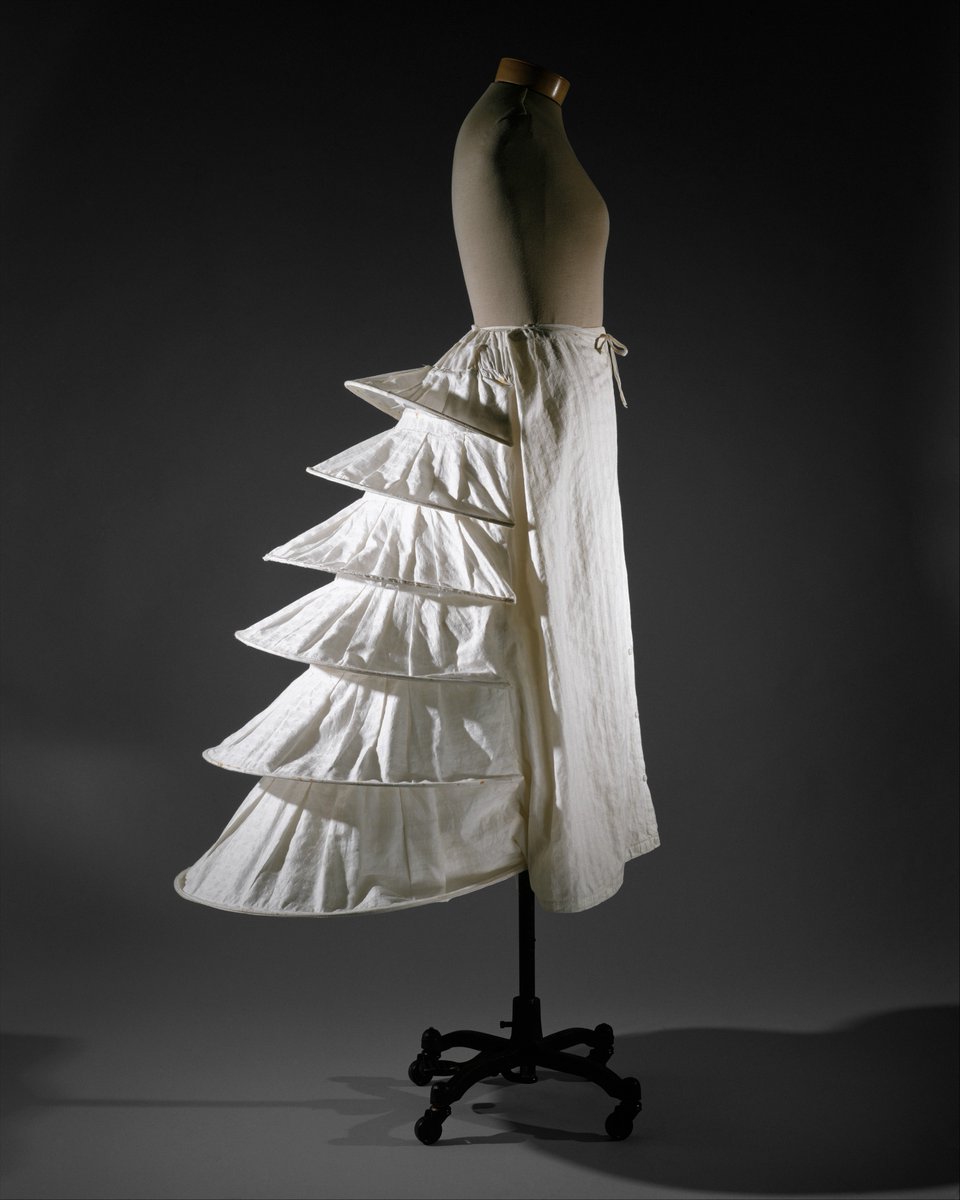
• • •
Missing some Tweet in this thread? You can try to
force a refresh























